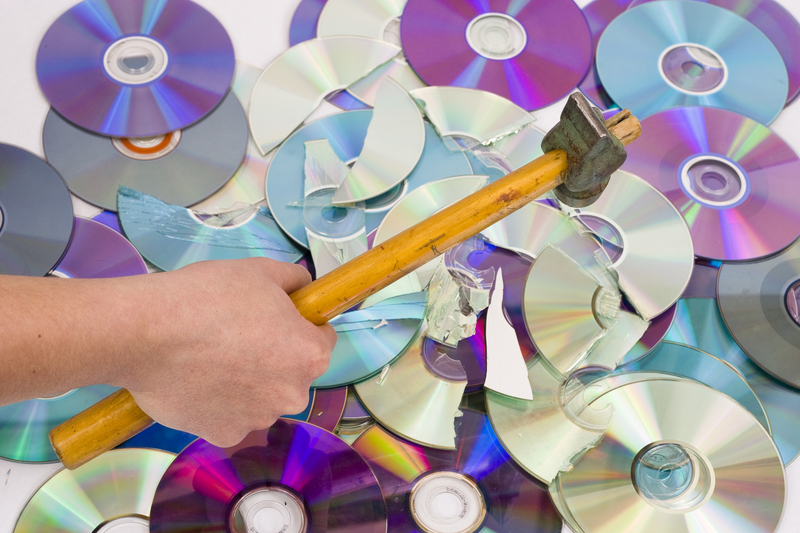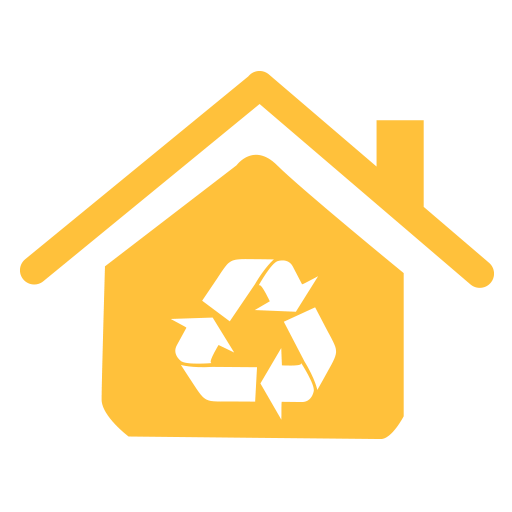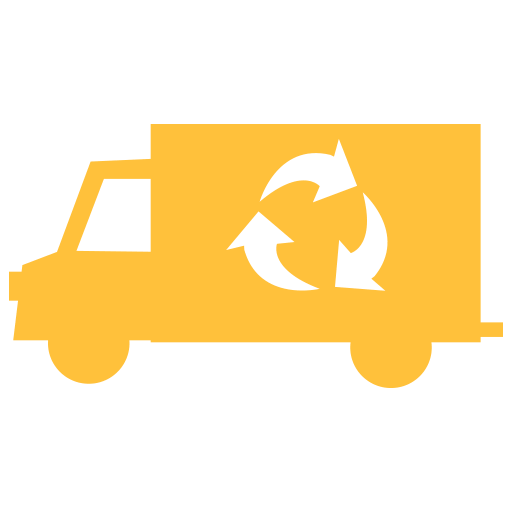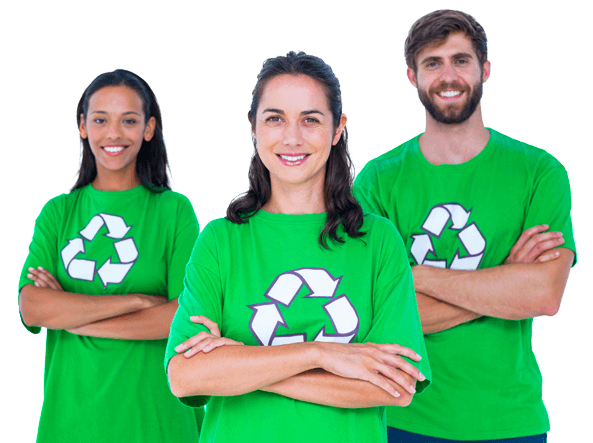The Battle Against Microplastic Pollution: Can We Win
Posted on 14/10/2025
The Battle Against Microplastic Pollution: Can We Win?
Microplastic pollution has emerged as one of the most critical environmental challenges of the 21st century. While plastic's versatility and utility have revolutionized modern life, the proliferation of tiny plastic fragments--known as microplastics--has created a new and complex threat to global ecosystems, human health, and sustainable development. As awareness rises, so does the urgency to find solutions. But can we truly win the battle against microplastic pollution?

Understanding Microplastic Pollution: What Are Microplastics?
Microplastics are defined as plastic particles smaller than 5mm in diameter. They originate from a diverse range of sources, both primary and secondary:
- Primary microplastics are manufactured small--for instance, microbeads in cosmetics or industrial pellets, sometimes referred to as nurdles.
- Secondary microplastics are the product of larger plastic objects breaking down due to exposure to sunlight, wind, and wave action, such as plastic bags, bottles, and synthetic textiles.
These pollutants are now found in every corner of the globe--from the deepest ocean trenches to remote mountaintops. They contaminate land, waterways, and the air, posing ubiquitous environmental and health concerns.
How Do Microplastics Enter the Environment?
Microplastics enter the environment through a variety of pathways:
- Improper waste management: Littering and inefficient recycling allow plastics to reach natural habitats, where they degrade into microplastics.
- Runoff from urban areas: Rainwater washes plastic fragments from streets into rivers and oceans.
- Industrial discharge: Factories can release microplastic pellets directly into waterways.
- Household sources: Synthetic clothing fibers and microbeads from personal care products frequently pass through treatment plants because of their minuscule size, ending up in the aquatic environment.
The Scale of the Microplastic Problem
The sheer extent of microplastic contamination is eye-opening:
- It is estimated that trillions of microplastic particles float in our oceans, outweighing certain species of fish.
- Microplastics have been found in over 100 aquatic species, including fish, shellfish, and marine mammals.
- Recent studies have detected microplastics in human tissues, drinking water, bottled water, and even the air we breathe.
The persistence of microplastics compounds the issue--they do not decompose in the environment and can persist for centuries. As they accumulate, their impact on the food chain, the environment, and health becomes more acute.
Environmental Consequences of Microplastic Pollution
Microplastic contamination has far-reaching consequences:
- Marine Ecosystems: Microplastics are ingested by zooplankton, fish, and seabirds, obstructing digestive systems and leading to starvation or exposure to toxic additives.
- Biodiversity Threats: Accumulation of plastic particles disrupts breeding, feeding, and migration patterns of countless species.
- Soil Health: Microplastics decrease soil fertility and threaten terrestrial organisms like earthworms.
- Air Quality: Fibrous microplastics shed from synthetic textiles become airborne, impacting respiratory health in humans and animals.
Health Risks Posed by Microplastics
One major reason microplastic pollution is such a high-priority concern is its potential impact on human health.
- *Ingestion*: Microplastics found in seafood, salt, honey, water, and other foods may accumulate in the human body, though much remains unknown about their long-term effects.
- *Inhalation*: Airborne microplastics are now recognized as an inhalation hazard, especially indoors where synthetic fabrics and urban dust are common sources.
- *Chemical Contaminants*: Microplastics can absorb and concentrate toxic chemicals such as pesticides, heavy metals, and persistent organic pollutants (POPs). When ingested, these toxins may leach into the body.
- *Biological impacts*: Early studies suggest microplastics can induce inflammation and oxidative stress in organisms, which may have long-term implications for organ function and immunity.
Innovative Solutions to Tackle Microplastic Contamination
As the world wakes up to the severity of microplastic pollution, scientists, innovators, policymakers, and environmentalists are racing to find answers. Here are some of the most promising strategies to combat this crisis:
Strengthening Policy and Regulation
- Bans on Microbeads: Several countries have legislated bans on microbeads in cosmetics and personal care products--a key source of primary microplastics.
- Improved Waste Management: Enforcing stricter laws on waste sorting and plastic disposal can reduce the prevalence of plastics in the natural environment.
- Producer Responsibility: Policies holding manufacturers responsible for the lifecycle management of their products are gaining traction.
Technological Innovations
- Advanced Wastewater Treatment: Upgrading filtration systems in water treatment plants with finer mesh screens, biofilters, and advanced oxidation methods can capture smaller particles before they enter waterways.
- Biodegradable Plastics: Research into bioplastics, derived from plant-based sources, aims to replace traditional plastics with materials that break down under natural conditions.
- Textile Engineering: Engineers are developing synthetic fabrics that shed fewer fibers during washing and wear, and washing machine filters designed to capture shed microfibers.
Citizen Activism and Cleanups
- Beach and River Cleanups: Voluntary groups across the world organize cleanups to physically remove plastics before they fragment into microplastics.
- Public Awareness Campaigns: Education initiatives teach individuals how to minimize plastic use and advocate for policy change.
- Citizen Science: Engaging the public in monitoring and data collection helps scientists track microplastic pollution more effectively.
Cutting-Edge Research Directions
- Enzymatic Degradation: Scientists are exploring enzymes and microorganisms capable of breaking down plastics at the molecular level, potentially revolutionizing recycling.
- Innovative Filtration: Devices and materials ranging from electrospun nanofibers to oil-absorbent hydrogels are being tested to trap microplastics in water and air.
- Mapping Contamination: Using satellite technology, drones, and artificial intelligence, researchers can better map, predict, and respond to microplastic hotspots.
Individual Actions to Fight Microplastic Pollution
*While large-scale solutions must be prioritized, every individual can make a difference in the fight against microplastic contamination.*
- Reduce Single-Use Plastics: Opt for reusable bags, bottles, and containers to minimize plastic wastage at the source.
- Choose Natural Fibers: Select clothing and home goods made from cotton, wool, or other natural fibers instead of synthetics.
- Proper Disposal: Follow local recycling guidelines and never litter, ensuring plastics are kept out of nature.
- Support Legislation: Advocate for policies limiting plastic production, promoting recycling, and funding pollution research.
- Educate Others: Spread awareness about the microplastic issue in your community and social network. *Change begins with conversation!*
Global Collaboration is Key
Combating global microplastic pollution demands a coordinated and international response. Plastic pollution crosses borders via ocean currents and atmospheric movement, meaning no single country can address it alone. The United Nations and other global organizations are working to:
- Develop international treaties and standards for plastic production, use, and recycling.
- Facilitate technology transfer and funding for developing nations to upgrade waste management systems.
- Support research, data sharing, and early-warning systems for transboundary microplastic threats.

Can We Win the Battle Against Microplastic Pollution?
The fight against microplastic pollution is daunting, but it is not impossible. Success will depend on a combination of robust policy, scientific innovation, industry commitment, and grassroots action. Key milestones in this battle include:
- Widespread adoption of alternatives to plastic and improved product design to limit microplastic shedding.
- Expanded implementation of advanced water and air filtration across industry and municipal facilities.
- Continued research into the impacts of microplastics and new methods for mitigation.
- Massive investment in education, enabling people everywhere to make smarter choices and spark systemic change.
Challenges to Overcome
*Despite progress, significant barriers remain:*
- Infrastructural gaps in developing regions make waste management and monitoring difficult.
- Plastic industry lobbying at times blocks regulation and meaningful reform.
- Lack of standardization in microplastic measurement and data collection hinders progress.
- High cost of new filtration and recycling technology presents a hurdle to mass adoption.
Nonetheless, inspired by the success of ozone protection, biodiversity preservation, and climate action, there is reason to believe the world can unite around the urgent issue of microplastic pollution, turning the tide toward a cleaner, healthier future.
Conclusion: Hope, Innovation, and Shared Responsibility
Can we win the battle against microplastic pollution? With determination, collective will, and innovation, we have every chance. The solution is multifaceted, requiring action at the systemic, community, and personal levels. Every step counts, every policy matters, and every innovation could be the breakthrough that tips the balance in our favor.
Together, through awareness, action, and global partnership, we can confront microplastic pollution--and perhaps one day, declare victory in this pressing environmental battle.

 020 3875 4102
020 3875 4102 020 3875 4102
020 3875 4102




 House clearance
House clearance Rubbish collection
Rubbish collection





